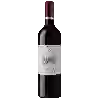
Cave du MarmandaisMez Vinea Rouge
This wine is a blend of 2 varietals which are the Abouriou and the Merlot.
This wine generally goes well with beef and game (deer, venison).
Food and wine pairings with Mez Vinea Rouge
Pairings that work perfectly with Mez Vinea Rouge
Original food and wine pairings with Mez Vinea Rouge
The Mez Vinea Rouge of Cave du Marmandais matches generally quite well with dishes of beef, lamb or poultry such as recipes of caramelized beef with onions, couscous merguez or seafood, chorizo and chicken paella from patou.
Details and technical informations about Cave du Marmandais's Mez Vinea Rouge.
Discover the grape variety: Abouriou
Abouriou noir is a grape variety that originated in France (Lot-et-Garonne). It produces a variety of grape specially used for wine making. It is rare to find this grape to eat on our tables. This variety of grape is characterized by medium-sized bunches and medium-sized grapes. The Abouriou noir can be found in several vineyards: South-West, Cognac, Bordeaux, Loire Valley, Rhone Valley, Provence & Corsica, Armagnac, Languedoc & Roussillon.
Informations about the Cave du Marmandais
The Cave du Marmandais is one of wineries to follow in Côtes du Marmandais.. It offers 172 wines for sale in the of Côtes du Marmandais to come and discover on site or to buy online.
The wine region of Côtes du Marmandais
Côtes du Marmandais is a satellite district of the Bordeaux wine region in Southwest France. It owes its name to the town of Marmande at its centre, which Lies on the North bank of the Garonne. The appellation AOC Côtes du Marmandais covers red, white and rosé wines produced from grapes grown in defined areas of the parishes around Marmande. The Garonne River divides the Marmande district into two Parts, the north and the south, which are eastern extensions of the Entre-deux-Mers and Graves regions respectively.
The wine region of South West
The South-West is a large territorial area of France, comprising the administrative regions of Aquitaine, Limousin and Midi-Pyrénées. However, as far as the French wine area is concerned, the South-West region is a little less clear-cut, as it excludes Bordeaux - a wine region so productive that it is de facto an area in its own right. The wines of the South West have a Long and eventful history. The local rivers play a key role, as they were the main trade routes to bring wines from traditional regions such as Cahors, Bergerac, Buzet and Gaillac to their markets.
The word of the wine: R-M (champagne)
Harvesting and handling. It is the artisan winemaker. He elaborates his own champagne, often a monocru representative of the village or the surrounding villages.











